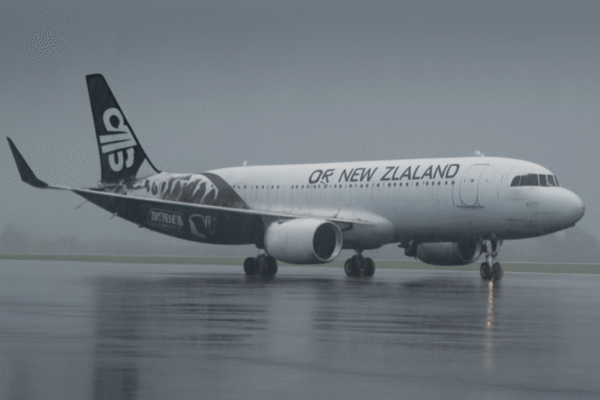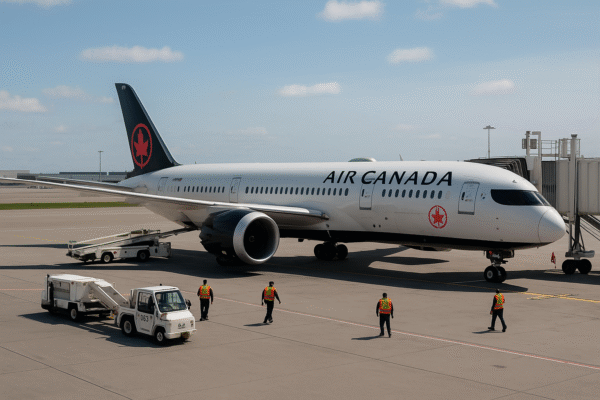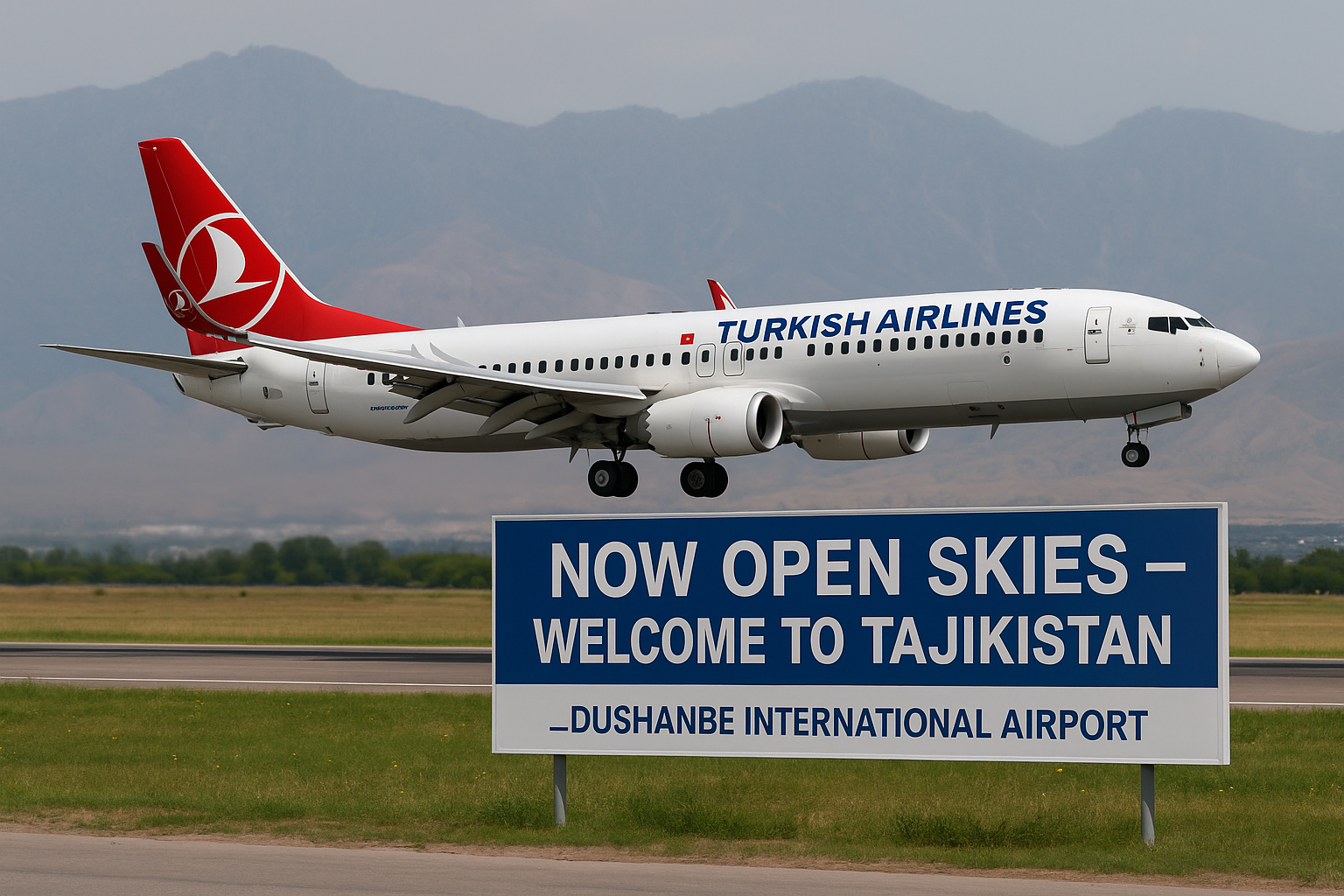Tajikistan has taken a monumental step toward international aviation integration with the launch of a sweeping Open Skies policy—a strategic move designed to attract global carriers, invigorate tourism, and modernize the nation’s air transport infrastructure. The policy eliminates decades of restrictive regulations, granting foreign airlines unrestricted access to the country’s skies.
In a rapid and promising response, Turkish Airlines, one of the world’s most prominent flag carriers, has announced a frequency increase on its Istanbul–Dushanbe route, expanding from three to five flights per week. This demonstrates immediate market confidence and signals broader international interest in Tajikistan’s aviation future.
A Transformative Policy for Tajikistan’s Aviation Sector
Tajikistan’s new Open Skies framework dismantles the traditional “parity principle”—a protectionist measure that previously limited foreign airline operations in favor of national carriers. By removing these barriers, the government is inviting global competition, allowing international carriers to operate flights without restrictions on frequency, seat capacity, aircraft size, or fares.
The policy applies to all four of Tajikistan’s international airports:
- Dushanbe International Airport (DYU)
- Khujand International Airport
- Kulyab Airport
- Bokhtar Airport
These gateways will now be open to expanded foreign airline participation, offering more route options, improved service standards, and increased passenger volumes—particularly from Europe, the Middle East, and neighboring Central Asian states.
Strategic Exception for 18 Routes During Transition Phase
While the broader aviation market has been liberalized, the government has outlined a three-year transition phase during which 18 specific routes will remain under control. Though the affected destinations have not been publicly named, the measure likely aims to provide domestic carriers with time to adapt and remain competitive.
Industry experts believe this temporary clause balances open competition with national airline protection during a crucial period of sector evolution.
Turkish Airlines Leads the Way with Expanded Dushanbe Service
One of the first major beneficiaries of the new policy is Turkish Airlines, which has already enhanced its footprint in Tajikistan by increasing flight frequency from Istanbul to Dushanbe. Operating modern aircraft with strong connectivity from its Istanbul hub, Turkish Airlines positions Dushanbe as an emerging regional link between Central Asia and Europe.
The airline’s expansion reflects growing demand from business travelers, tourists, and the Tajik diaspora, and confirms the economic viability of Tajikistan’s new aviation policy.
Regional Trends: Tajikistan Aligns with Kazakhstan’s Aviation Vision
Tajikistan’s move mirrors the Open Skies policy implemented by Kazakhstan in November 2019, which liberalized access to 13 of its airports. Since then, foreign carriers have launched new routes into Kazakhstan from cities such as Baku, Muscat, Abu Dhabi, and Novosibirsk. In June 2025 alone, four new international routes were activated across the region, suggesting that liberalized skies directly correlate with increased connectivity and tourism inflows.
With this regional precedent, Tajikistan is now aligning its aviation strategy with its neighbors, bolstering its position as a competitive air travel hub in Central Asia.
Unlocking Economic Potential Through Tourism and Trade
Tajikistan’s Open Skies initiative is expected to catalyze tourism growth by providing easier and more affordable access to international visitors. Tajikistan offers a rich mix of mountain landscapes, Silk Road heritage sites, and cultural experiences, all of which are likely to attract adventure tourists and cultural explorers.
Additionally, enhanced air connectivity will:
- Encourage foreign direct investment (FDI)
- Improve logistics and trade
- Support employment in aviation, hospitality, and travel sectors
By inviting international airlines to compete, the government aims to boost service quality, lower ticket prices, and expand route availability—all key elements in building a consumer-friendly aviation environment.
Challenges and Opportunities for Domestic Airlines
While the liberalization policy offers consumers and foreign carriers more freedom, it presents new challenges for national carriers like Somon Air and Tajik Air, which may need to modernize fleets, reduce operating costs, and enhance service delivery to retain market share.
This healthy pressure, however, could usher in a new wave of innovation and efficiency within Tajikistan’s domestic aviation sector, helping it grow alongside foreign competitors rather than be overshadowed.
Looking Forward: Tajikistan’s Global Aviation Aspirations
Tajikistan’s decision to open its skies is a reflection of its broader commitment to economic modernization and global engagement. The country’s geographical location—linking China, Central Asia, and the Middle East—makes it a natural transit point for both passenger and cargo aviation.
The increased presence of international carriers like Turkish Airlines not only enhances connectivity but also elevates Tajikistan’s profile on the global aviation map. As more airlines assess the opportunity to enter the Tajik market, routes to European, Gulf, and Asian destinations are expected to expand steadily in the coming years.
Conclusion: A New Era for Tajikistan’s Skies
Tajikistan’s Open Skies policy marks a pivotal turning point in its aviation history. By removing protectionist restrictions and embracing market liberalization, the nation is actively inviting the world to connect, invest, and explore. With Turkish Airlines already expanding its service, and other carriers likely to follow, Tajikistan is set to become a regional aviation success story.
For global travelers, airlines, and investors, the message is clear: Tajikistan is open for business—and open to the skies.
For more travel news like this, keep reading Global Travel Wire



















